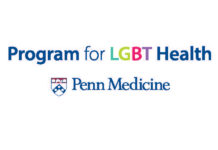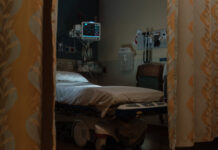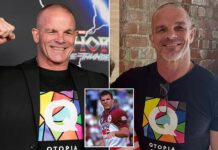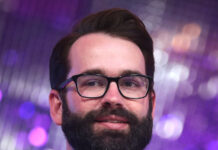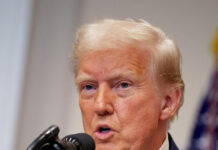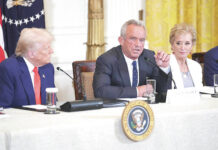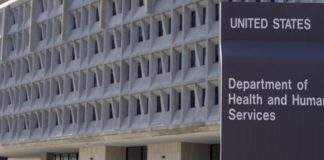It’s hard to imagine Anthony Fauci, MD, director of the National Institute of Allergy and Infectious Diseases, running a private practice that caters to wealthy Manhattanites, but that’s the direction he once considered.
When he was called into the Public Health Service during the Vietnam War, Fauci figured he’d do his time and then “go back to New York and be the chief resident at a New York hospital. Back then, that was your ticket to a private practice on Park Avenue.”
But the more he learned about himself, the more he realized that public service was indeed his calling — and there may not have been a more consequential career decision in the history of public health.
These details come from National Geographic Documentary Films’ latest project, “FAUCI,” which starts streaming on Disney+ on Wednesday, October 6.
Directed by John Hoffman and Janet Tobias — two heavyweights in high-profile public health documentaries — the film follows Fauci through the darkest days of the COVID-19 pandemic, and draws parallels to his leadership role during the AIDS crisis. It also shows Fauci’s very human side, which has always been evident in his authenticity during interviews, but is bolstered by home videos with his children and the story of how he met his wife, Christine Grady, MSN, PhD.
The film opens with Fauci leaving through his front door to be driven to a work meeting. He tells someone on his cellphone that security is trying to get him into the right entrance: “This is a whole new life, you know.”
History Repeating
Except that it isn’t. Not exactly. The film shows the many parallels between Fauci’s involvement with the COVID-19 pandemic and the AIDS crisis of the 1980s. In the early days, both pandemics had “a fog of war” about them, he said.
Fauci described probably the most pivotal moment in his career, when as a young NIH investigator he took a risk and switched course from studying vasculitis to going all-in on a new disease that was killing gay men.
The first Morbidity and Mortality Weekly Report article about the AIDS crisis in 1981 focused on five gay men who all developed a strange pneumonia. At the time, Fauci figured it was a “fluke.” But a month later, another paper reported on 26 gay men who had not only pneumocystis pneumonia but also Kaposi’s sarcoma. That gave Fauci goosebumps, he said.
“I wrote an article in 1981 saying that if we think this disease is going to stay confined to a discreet group of people and it’s not going to explode, we’re kidding ourselves,” Fauci said. “A major journal rejected it and said I was being too alarmist.”
Those early days were difficult. Fauci gets choked up remembering an AIDS patient at the NIH who went blind from cytomegalovirus retinitis. When Fauci couldn’t get the words out, he explained, “post-traumatic stress syndrome, that’s what it is.”
Unlike COVID-19, it took years to identify the HIV virus that was causing AIDS. Fauci and his NIH colleagues were bashed by the AIDS community — particularly the activist group ACT UP — for working too slowly and not granting access to investigational medications for dying patients.
Fauci, relying on his “tough kid from Brooklyn” persona — “You don’t get intimidated. You don’t take sh*t from anybody,” he said in the film — took it upon himself to reach out to the activist community by showing up at one of their meetings.
“I went there to listen and try and explain the rationale we had for doing what we were doing, even though they didn’t agree,” he said. “But their instincts were right.”
That launched a relationship that ultimately laid the groundwork for patient advocacy groups being involved in clinical trial design that continues today.
At the time, though, his outreach didn’t quell the anger. On May 21, 1990, activists marched on the NIH, and Peter Staley — whom Fauci remains good friends with to this day (in one scene, Fauci laments to Staley on the phone that the “dark web people are getting bad,” harassing his wife and daughters) — got arrested.
As security escorted Staley through the building, he met Fauci: “Peter looks me in the eye and says, ‘Tony, I did it, I got arrested! I told you I was going to get arrested!’ And the cop looks at me and says, what the sh*t is going on here? Who is this guy? He’s your friend? … We completely befuddled the police.”
The relationship between Fauci and the activists peaked at the International AIDS Conference in June 1990 in San Francisco, when conference organizers allowed activists to speak directly to researchers. Fauci delivered a speech that bridged the two worlds, activists and researchers, and received a standing ovation from the entire audience at the end.
“That speech changed everything,” Fauci noted. “We were able to redesign clinical trials for people with HIV, with Black, Brown, and pregnant women included.”
AIDS activist David Barr described it as changing the shape of clinical research and drug development that went well beyond AIDS: “Scientists realized that you need to include these voices in the process because it makes for better science, and Tony is the one who opened that door. We’re the ones who knocked on that door, pushed on that door, and barged our way in, but Tony understood the value of it early on.”
While he was able to unite both fronts in that war, Fauci was less optimistic about the divisiveness he faced during the COVID-19 pandemic.
“The difference now is, divisiveness is dominating COVID and I don’t see [the two sides] ever clapping together,” Fauci said. “I think we’re going to get through it in spite of the divisiveness and politicization. We’re not going to get through it because of it.”
Trump Administration Tensions
When an interviewer asked whether Fauci can “get into” his time serving the Trump administration, his reaction was, “Yikes. How deep do you want to get?”
Fauci said he took issue with the administration’s aggressive treatment of the press, press conferences not led by scientists, and the former president’s penchant for off-the-cuff remarks.
Fauci recalled the first time he contradicted the former president at the press conference podium. It was about hydroxychloroquine.
“When I stepped back from podium, I remembered the advice I got decades earlier, that whenever you go into the White House, you should assume there’s a possibility that you’re not going to get asked back because you might have to tell someone something they’re not going to want to hear,” he said. “And as I stepped back, I thought, ‘Well this might be it.'”
In one of the opening scenes of the film, it was late May 2020 and Fauci was on the phone with a media relations team member who advised him that their request to talk about vaccine research on a TV show was turned down. The administration wanted to promote economic messages instead.
“So I guess we’re back at our stalemate,” he said. “I don’t know how talking about a vaccine isn’t [talking] about the economy.”
The politicization, he noted, turned him into the “bad guy to an entire subset of people because I represent something that is uncomfortable for them — and that is, the truth.”
Politics aside, Fauci said he sees the two most devastating pandemics in the last 100 years as “sort of like bookends on my career and my life.”
“When you’re involved in a race to stop a horrible disease, you always feel that you’re not doing things quickly enough or well enough,” he said, standing amid hundreds of thousands of white flags representing U.S. COVID deaths. “It just reminds me so much of when we were struggling to develop effective therapies for HIV. If we had just gotten it a day earlier, a week earlier, a month earlier, this number of people would not have died.”
Still, when historians look back on his tenure — “if they would want to look back,” he says humbly — his hope is that “maybe somebody says, ‘Hey, that guy was pretty good.'”

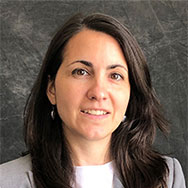
![author['full_name']](https://clf1.medpagetoday.com/media/images/author/kristinaFiore_188.jpg)
